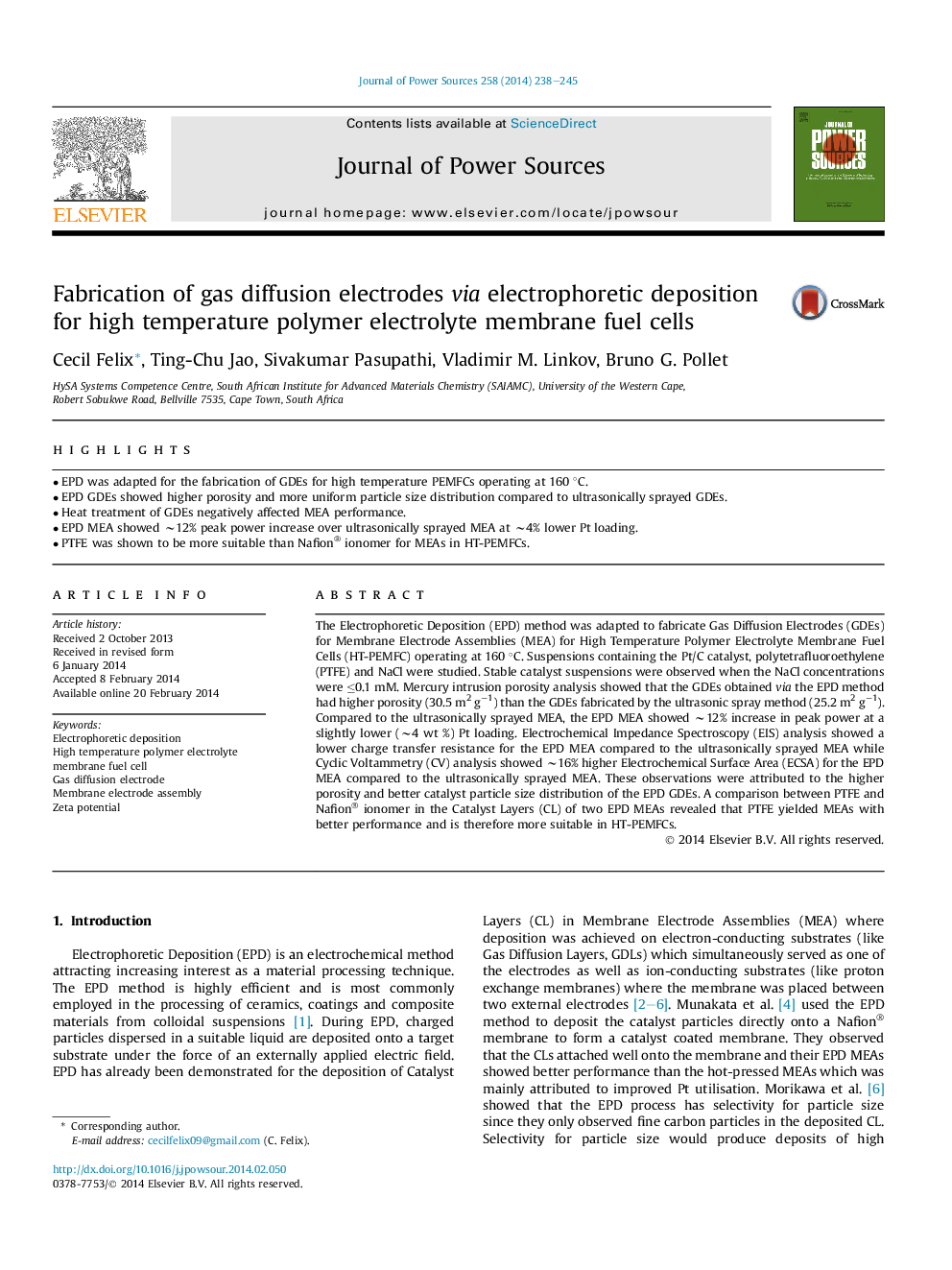| Article ID | Journal | Published Year | Pages | File Type |
|---|---|---|---|---|
| 7736650 | Journal of Power Sources | 2014 | 8 Pages |
Abstract
The Electrophoretic Deposition (EPD) method was adapted to fabricate Gas Diffusion Electrodes (GDEs) for Membrane Electrode Assemblies (MEA) for High Temperature Polymer Electrolyte Membrane Fuel Cells (HT-PEMFC) operating at 160 °C. Suspensions containing the Pt/C catalyst, polytetrafluoroethylene (PTFE) and NaCl were studied. Stable catalyst suspensions were observed when the NaCl concentrations were â¤0.1 mM. Mercury intrusion porosity analysis showed that the GDEs obtained via the EPD method had higher porosity (30.5 m2 gâ1) than the GDEs fabricated by the ultrasonic spray method (25.2 m2 gâ1). Compared to the ultrasonically sprayed MEA, the EPD MEA showed â¼12% increase in peak power at a slightly lower (â¼4 wt %) Pt loading. Electrochemical Impedance Spectroscopy (EIS) analysis showed a lower charge transfer resistance for the EPD MEA compared to the ultrasonically sprayed MEA while Cyclic Voltammetry (CV) analysis showed â¼16% higher Electrochemical Surface Area (ECSA) for the EPD MEA compared to the ultrasonically sprayed MEA. These observations were attributed to the higher porosity and better catalyst particle size distribution of the EPD GDEs. A comparison between PTFE and Nafion® ionomer in the Catalyst Layers (CL) of two EPD MEAs revealed that PTFE yielded MEAs with better performance and is therefore more suitable in HT-PEMFCs.
Keywords
Related Topics
Physical Sciences and Engineering
Chemistry
Electrochemistry
Authors
Cecil Felix, Ting-Chu Jao, Sivakumar Pasupathi, Vladimir M. Linkov, Bruno G. Pollet,
